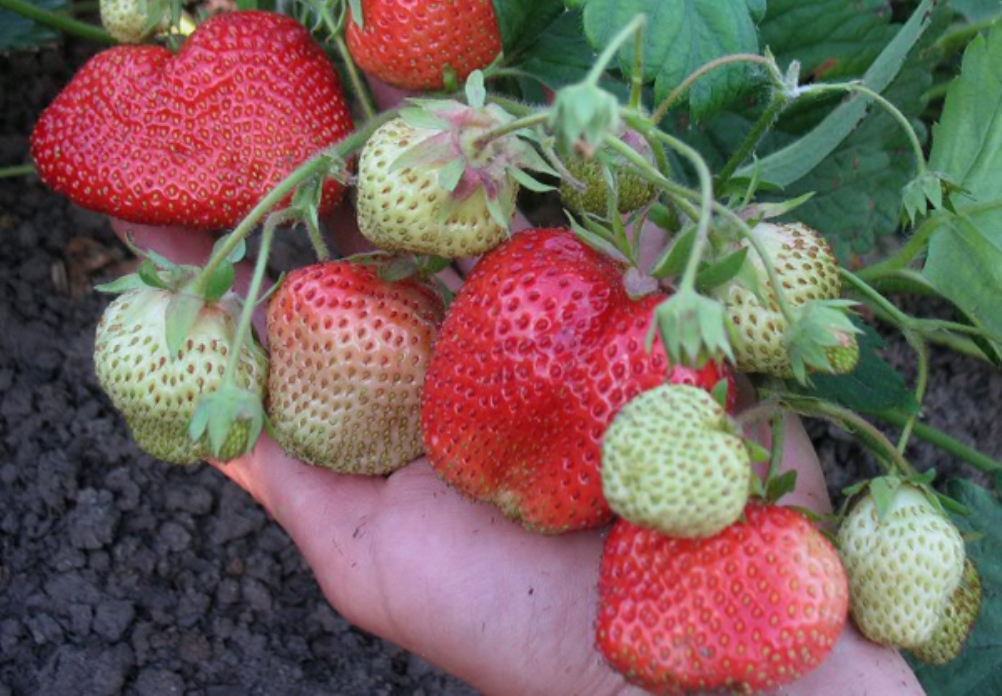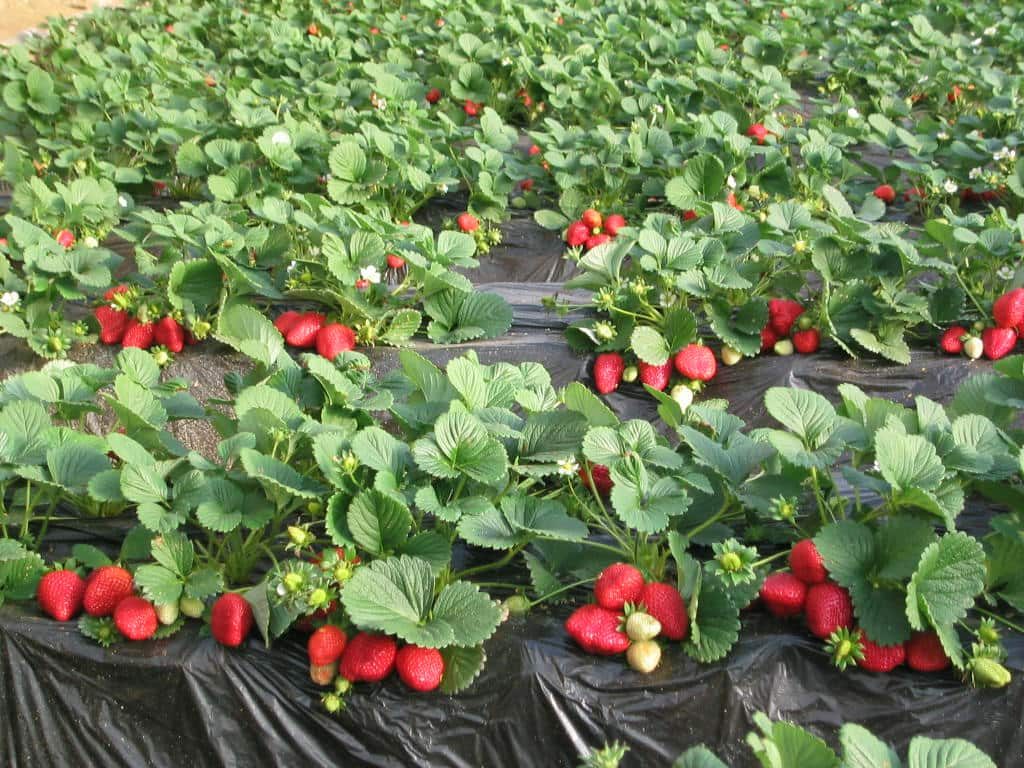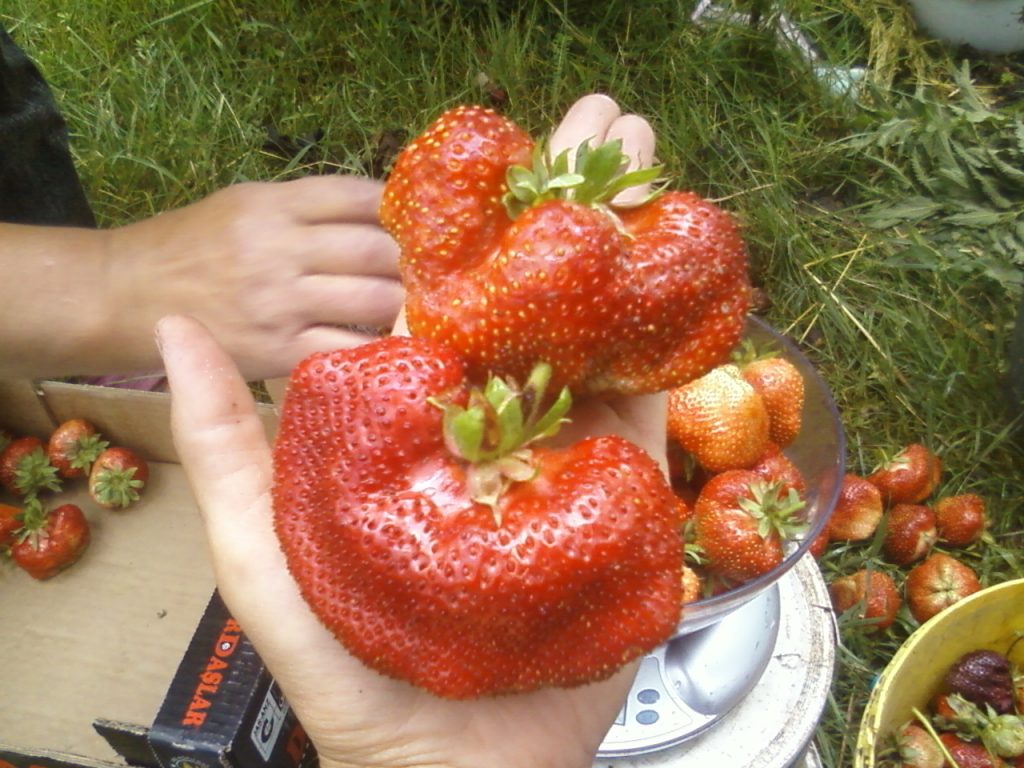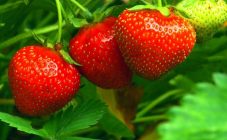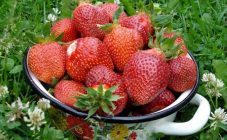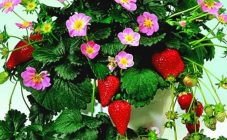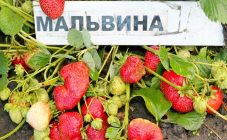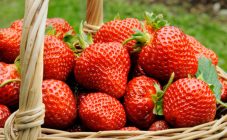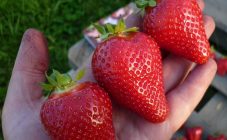Content:
Strawberries are a favorite delicacy of many, which, under certain conditions, grows in domestic summer cottages. Breeders annually develop new varietal varieties, increasingly replacing old varieties. The article will focus on the successful hybrid of Gigantella - the Chamora Turusi strawberry, the origin story of which remains a mystery.
Description and characteristics of the variety
How the Japanese strawberry variety Chamora Turusi was obtained is not known for certain. A characteristic feature of the variety is large-fruited, the weight of the berries varies from 80 to 110 g. The size of the berries depends on climatic conditions, the composition of the soil, as well as compliance with the rules of agricultural technology. The strawberry variety is not a particularly demanding variety, but responds well to proper care.
If no fertilizers are applied to the soil, the weight of the berries will not exceed 30 g. The shape of the Chamora Turusi berries is rounded-comb, as the fruits ripen, their peel acquires a dark red color, as well as the rich pleasant aroma of wild strawberries. Due to the high density of the pulp, the fruits can be transported even over long distances; in cool rooms, good keeping quality is also noted. In many regions, the Japanese variety is grown commercially. Due to its attractive appearance, good taste, transportability and keeping quality, Chamora Turusi strawberries are attracting more and more attention from both farmers and ordinary summer residents.
The variety belongs to the middle late, the time to harvest is suitable in the third decade of June - the first decade of July. The variety is characterized by early maturity, long and abundant fruiting, more than 1 kg of berries can be harvested from one adult bush.
The plantation bears fruit stably for 6 years, but after this period it needs to be updated. Another advantageous feature of the variety is the versatility of the use of the harvest (strawberries are consumed fresh, dried and frozen, preserves and jams are prepared).
Bushes grow of impressive size, densely leafed. Active mustache formation is observed. There is a predisposition to rapid overgrowth. Seedlings adapt well to different growing conditions. The leaf plates are colored deep green, large in size, and quite tough to the touch.
The Chamora Turusi strawberry variety is characterized by excellent cold resistance and endurance indicators. The plantation is not susceptible to diseases such as powdery mildew and verticillosis. But at the same time, the bushes are unstable to fungal diseases.
Planting and leaving
The abundance of fruiting depends on the quality of the planting material. Seedlings must be grown exclusively from the first outlets of healthy and strong bushes. If the seedlings are not grown independently, then they must be purchased in specialized stores, nurseries or from familiar farmers.
Basic rules for planting strawberries Chamora Turusi:
- First of all, you need to choose a landing site and prepare it in advance. Organic fertilizers and a nitrogen-mineral complex must be added to the soil. The optimal time for disembarkation is spring.
- The most common planting pattern is 35 * 60 cm.In heavily thickened plantations, the likelihood of developing fungal diseases significantly increases, the abundance of fruiting decreases, and insect pests take root.
- The plant is demanding on the composition of the soil - extremely fertile and light soil, Chamora Turusi does not react well to excess nitrogen, does not need to introduce a large amount of humus - and without that the leaves and root system are powerful. The optimal formulations for feeding the variety are potassium-phosphate fertilizers (Kristallon, Rostkontsentrat).
- There is a poor resistance to fungal diseases, so it is important to regularly and timely carry out all preventive measures.
That the Chamora Turusi variety does not like
- High humidity and excessively frequent watering have a detrimental effect on the taste of the fruit. The pulp loses its structure, becomes watery, acidity and sugar content decrease. Such fruits can no longer be transported, they will simply turn into porridge.
- The culture does not tolerate thickening. When planting, the interval between the bushes should be at least 30 cm. This is due to the active formation of a mustache and a powerful root system. The interval between mature bushes should be approximately 50-60 cm.
- Deficiency of moisture leads to crumbling of fruits, they do not ripen.
Advantages and disadvantages
The Chamora Turusi strawberry variety is quite common. There are many benefits to this.
The main advantages of the variety:
- The most significant advantage of the species is long, regular and abundant fruiting. Even if the plantation has settled on poor soils, the crop will still bear fruit.
- The berries have a high market value due to their attractive appearance, good taste and transportability.
- Subject to the storage rules, the harvested crop can be stored for up to two months.
- The variety has good adaptive properties.
- Powerful root system that provides itself with plenty of moisture and nutrients.
- High resistance to many diseases.
Despite the large list of advantages, unfortunately, there are also disadvantages:
- Poor resistance to fungal diseases.
- Demanding to the care and composition of the soil.
Among domestic gardeners, the assessment of the variety is quite high, since most of them like the taste of the fruit, which is not lost even with prolonged storage. But one should not, not to notice the critical remarks about the "capriciousness" of the culture: in comparison with other varieties, it is more prone to decay of the root system, the ground part often burns under the sun. Due to the active formation of the mustache, the agronomist must regularly thin out the plantations and monitor the condition of each bush.
It will be quite difficult for a novice agronomist to grow a variety of Japanese strawberry Chamora Turusi, but do not despair, there are a large number of varieties that compete with the Japanese relative. With some experience and following advice, it is much easier to cultivate this capricious berry.
